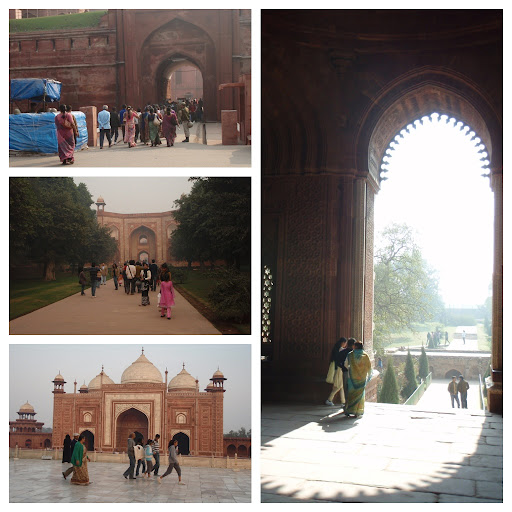
There are two main forms of Indian dress: the saree and the shalwar kameez. The former is worn by women and is a single strip of cloth draped over the body in a magical way that prevents it from sliding off in a heap. Saree colours are often bright and have really beautiful designs. I thought about buying one but --in a moment of damning honesty-- knew I'd never remember how to wear it.
People have been wearing sarees for thousands of years, with its origin tracing back to at least 2500 BC. It is featured in many Hindu epics, for example one in which the god Krishna protects the queen, Draupadi against humiliation by the foreign king, Dusshasan who attempts to publicly undress her by unwinding her saree. Krishna responded to Draupadi's frantic prayer by making the saree infinitely long until Dusshasan passes out from over work. (I should add that Draupadi had previously laughed at Dusshasan for believing a marble floor was actually water and lifting up his robes to step on it, but Krishna apparently considered that fair play).
The second form of Indian dress, the shalwar kameez, is traditionally a Muslim design but it now worn by people of all religious affiliations. The exception to this is in some Hindu temples, which may insist women wear skirts or sarees. Consisting of loose trousers with a thigh length or longer tunic, shalwar kameez can be worn by both men and women.
Contrary to the saree, this is a much easier design to wear and, rather surprisingly, I already possessed one, since the UK city of Leicester where my parents live has a large Indian population with the food and clothing to accompany the demographic. Sadly, I had left my shalwa kameez in the UK, although I almost robbed a French girl staying at the same guest house of hers which was in a stunning teal. Possibly though, it was for the best since when I mentioned this planned mugging to my friend she replied:
"Foreigners wear shalwa kameez with the most ridiculous things.... but they get away with it because they're foreign."
Hmm. Perhaps within India I should stick to jeans.
Many of the school uniforms for government-run schools I saw consisted of shalwa kameez, being a practical and unisex clothing to wear. Private schools tended to prefer jackets and ties.
Both sarees and shalwa kameez come in a myriad of colours and patterns. Going into a traditional clothing store involves being shown a dizzying display of fabrics. Customers sit before a shop assistant who pulls down a series of cloths, narrowing down the selection based on the customer's preference in both colour and design. Like with western attire, some colours are specifically used in special occasions. In Hindu traditions, for instance, red is the colour for the bride at weddings while white is reserved for widows. Given the amount of wine traditionally served at weddings, I couldn't help but feel that India had forestalled a very common problem.